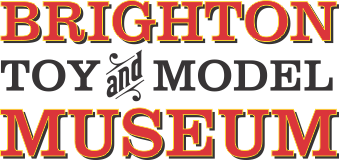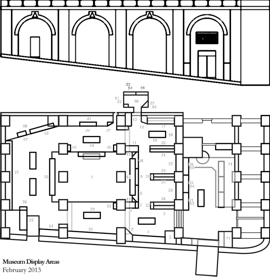Category:W. Britain
| Toy Brands and Manufacturers |
|---|
W. Britain |
William Britain Senior began his career as a 'Brass Cock Maker', but it is unknown as to when he made the transition from his former trade to toy making. However, the start of toy soldier production, which made William Britain a household name, began in 1893. In previous years, W. Britain had produced a number of mechanical toys with varied success, but in 1893 William Britain Senior cracked the hollowcast toy soldier process.
Imports from Germany dominated the toy market at the time. However, despite this, Britains continued to grow, partly thanks to the help of Albert Gamage and his store in Holborn, London – which was one of the largest toy outlets in the country. Gamage started stocking the new Britains lines and, following his new process, he sold the toy at well below the recommended price at ten pence halfpenny instead of one shilling. As Britains extended its range, Gamages continued to buy, with production only slowing/stopping during the First and Second World Wars. Until the late 1950’s, very little changed in the style of the figures, but with the introduction of plastic figures from companies such as Herald, metal hollowcast figures ceased production in 1966. From 1966 until the early 1980s, Britains continued to focus on space and agricultural toys as well as plastic military figures. In 1983, Britains produced its first all metal figure in nearly 20 years. Despite the fact that a diecast metal Scots Guard figure set was launched in 1973, these featured plastic weapons so could not be classified as true metal models. These first few sets featured typical ceremonial subjects such as Life Guards, Black Watch and Yeomen. These proved to be so popular that by 1984 the “Metal Models” range had begun to grow.
In 1984, Dennis Britain wished to retire, and no other family shareholder wished to take over the company. It was therefore sold to a small Midlands-based conglomerate, The Dobson Park Group, who changed the company name to Britain Petite Ltd in 1986.'Metal Models' continued to appear in the main Britains catalogue during the 1980s until 1987 when it was decided that these lines were collectibles rather than toys. They were therefore given their own special four-page catalogue, and during the late 80s the popularity of these figures continued to grow. In 1993, the W. Britain Centenary, the W. Britain Collectors Club was launched, and still exists today, with thousands of members all over the world.
The Dobson Park Group remained in control of W. Britain until the US toy company Ertl took over in 1997. Ertl bought W. Britain primarily for the farm series, not the toy soldier business, as Ertl was already an established manufacturer of farm toys in the USA. However, in 1999, the entire Ertl Company, including W. Britain, was taken over by Racing Champions, an even larger US toy company. It wasn't long before Ertl realised that the W. Britain toy soldiers were a very small part of their overall business, especially considering it required a considerable amount of time and effort. So in 2005, when First Gear (a small US collectible diecast vehicle manufacturer) approached Racing Champions about acquiring the W Britain name and toy soldier ranges, they accepted.
The Hollowcasting Process
Hollowcasting was the process where molten lead was poured into a figure mould, and some of the molten metal was poured back out again before the entire figure could set. The result of this process was that the Lead would form the skin on the inside of the mould, but by pouring the molten lead back out again, the figure would be hollow in the centre. In spite of the fact that German figures have been discovered, predating 1893, which appear to be hollow, it was W. Britain who pushed the process into the mainstream. Given that each figure contained less metal, W. Britain were able to achieve a lower retail price, and could thus compete with the German figures of that period.
References
This category currently contains no pages or media.


